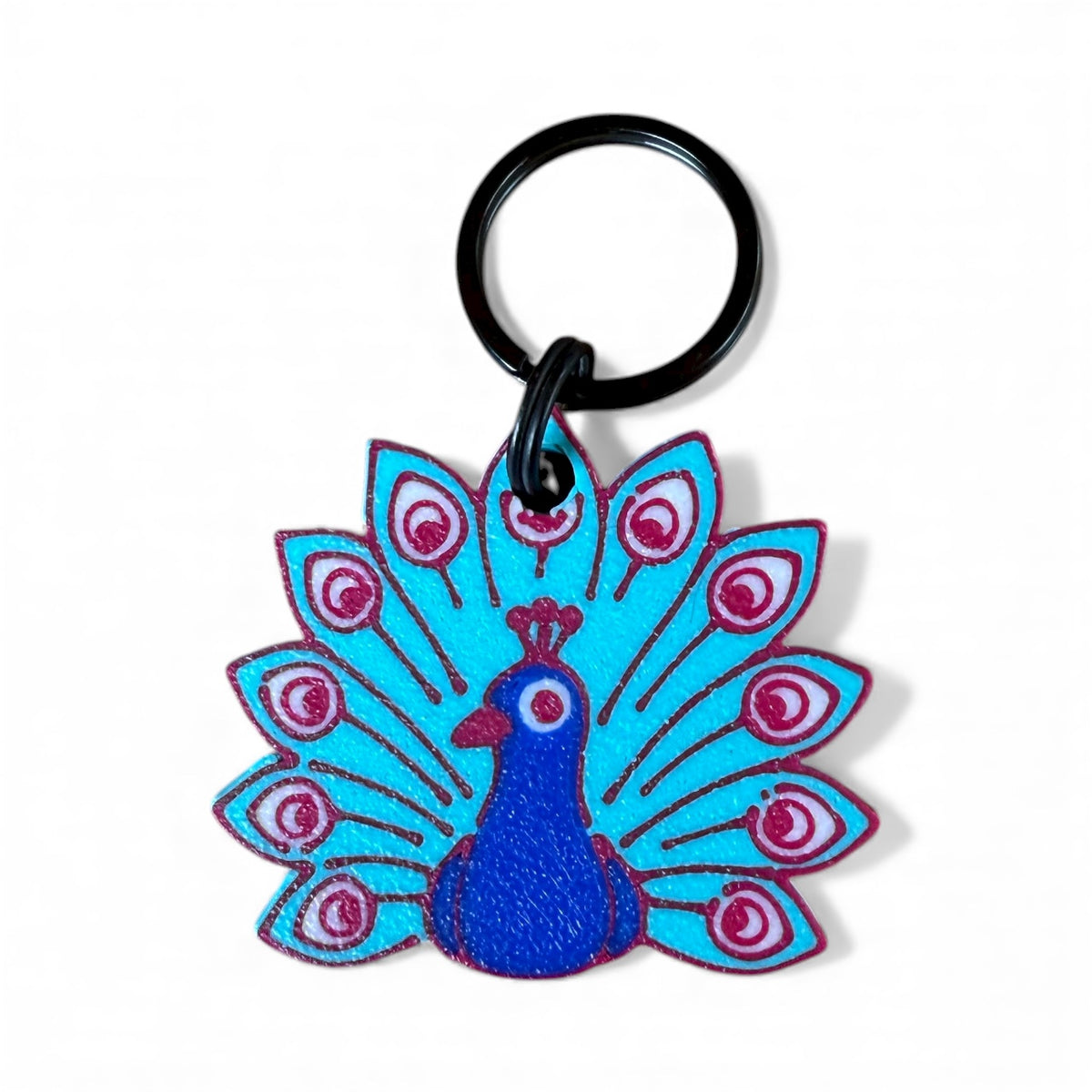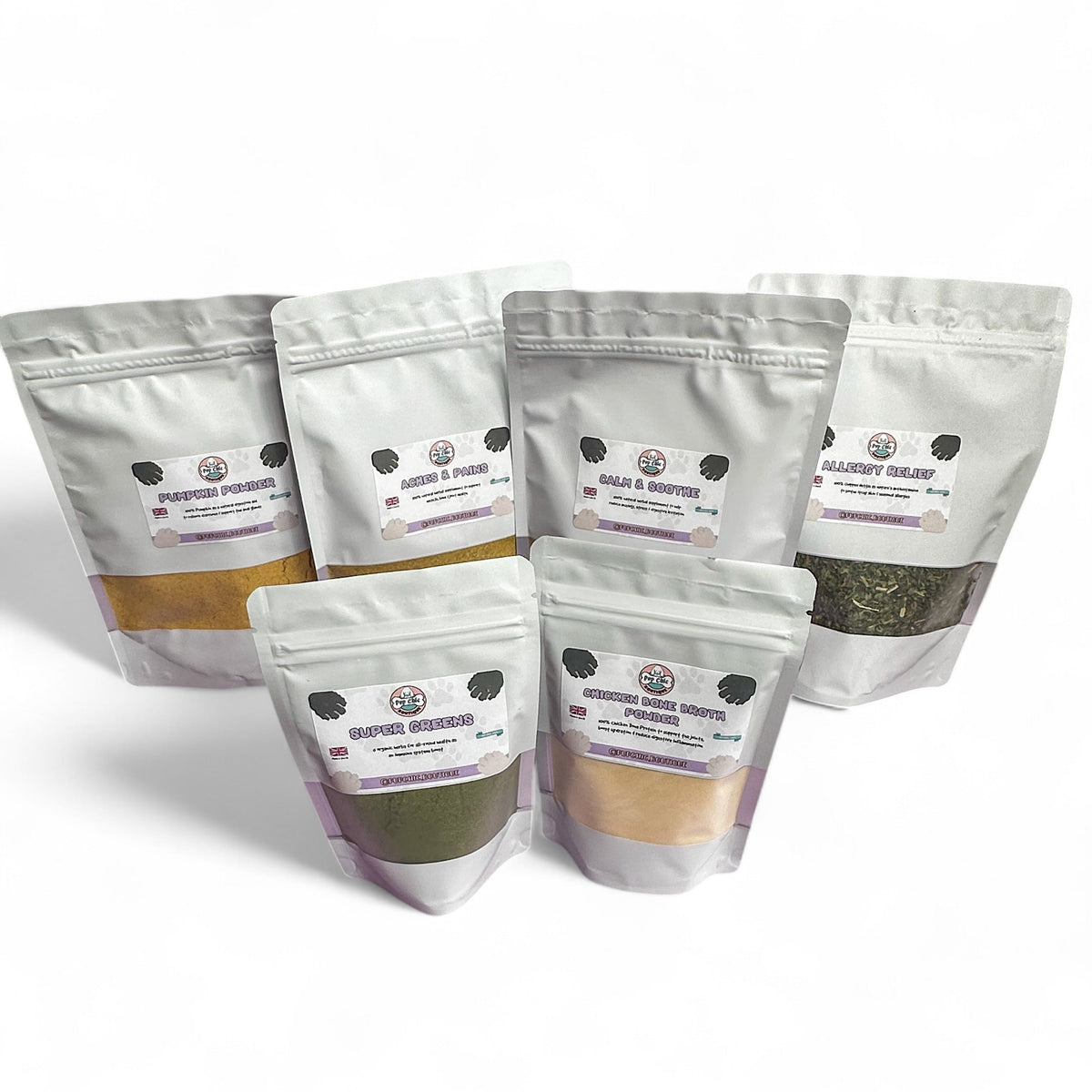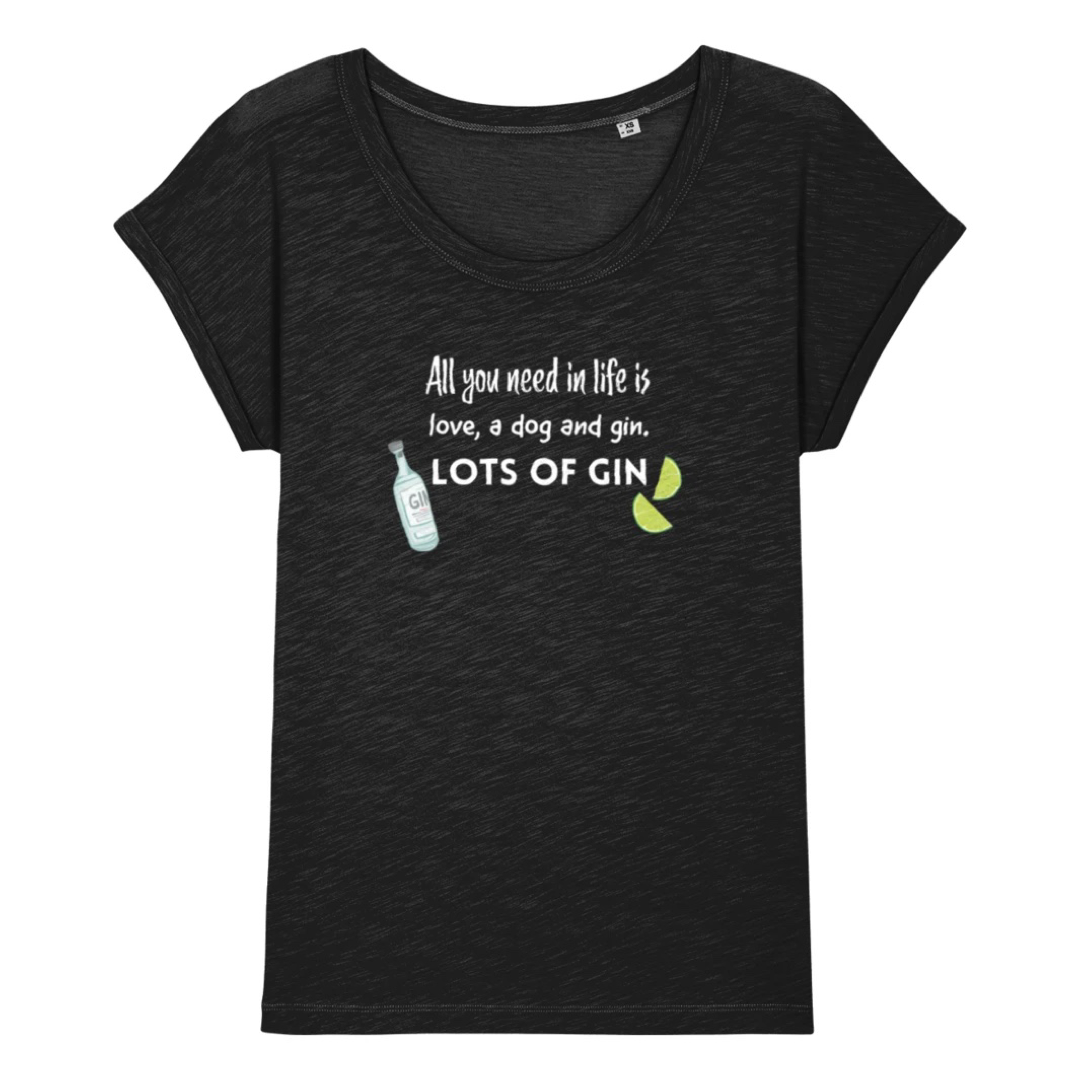Photo @stormyshiba
Choosing between a dog harness and a collar seems simple. Most UK dog owners grab whichever is on sale at the local pet shop. But research revealed something surprising. Some dog collars can create neck pressures up to 832 kPa, enough to cause tissue damage in energetic pups. That changes everything. Your choice can directly affect your dog’s health and happiness in ways most owners never expect.
Table of Contents
Quick Summary
| Takeaway | Explanation |
| Choose harnesses for brachycephalic breeds. | These breeds are at higher risk of respiratory issues, making harnesses a safer choice. |
| Harnesses reduce neck strain significantly. | Unlike collars, harnesses distribute pressure across the body, preventing potential injuries from pulling. |
| Consider your dog’s breed and size. | Different breeds have unique needs; smaller breeds might do well with collars, while larger, energetic dogs benefit from harnesses. |
| Account for your walking environment. | Urban vs. rural settings may dictate the best equipment for control and safety during walks. |
| Train puppies with harnesses for safety. | Harnesses help prevent neck injuries during early development stages, promoting positive walking experiences. |
Understanding Dog Harnesses and Collars
Choosing the right walking equipment for your dog is more than just a fashion statement. It’s about safety, comfort, and control. The debate between dog harnesses and collars is longstanding, with each option presenting unique advantages and potential drawbacks for different dog breeds and walking scenarios.
The Anatomy of Dog Walking Equipment
Dog harnesses and collars serve fundamentally different purposes in managing and controlling your canine companion. A collar is a traditional piece of equipment that wraps around a dog’s neck, typically featuring a metal ring for attaching a lead. According to the Royal Veterinary College, collars have been used for centuries as a primary method of identifying and controlling dogs.
In contrast, a dog harness distributes pressure across the dog’s chest and body, rather than concentrating it on the neck. This design offers several key benefits, especially for dogs prone to pulling or with respiratory concerns. Research published in the Veterinary Journal suggests that harnesses can significantly reduce strain on a dog’s neck and throat compared to traditional collars.
To help UK dog owners decide between a harness and a collar, here is a comparison of their main features, benefits, and drawbacks as discussed in the article:
| Feature/Consideration | Dog Collar | Dog Harness |
| Pressure Location | Concentrated on the neck | Distributed across chest/body |
| Risk for Brachycephalic Breeds | High (possible respiratory/tissue damage) | Low (safer for short-muzzled breeds) |
| Control for Pulling Dogs | Less effective, risk of neck injury | Superior, reduces injury risk |
| Impact on Eye Pressure (IOP) | Increases IOP in some dogs | No negative effect on IOP |
| Suits Small Breeds | Often suitable if non-pullers | Also suitable, offers extra safety |
| Comfort During Walks | Depends on leash behaviour | Generally more comfortable, especially for pullers |
| Recommended by Vets/Experts | Sometimes, based on breed/size | Increasingly recommended for most situations |
Considerations for Different Dog Types
Not all dogs are created equal, and the same walking equipment won’t suit every furry friend. Smaller breeds like Chihuahuas or Toy Poodles might find traditional collars comfortable, while larger, more energetic dogs such as Labradors or German Shepherds could benefit more from a well-fitted harness.
Breed characteristics play a crucial role in determining the most appropriate walking equipment. Dogs with short muzzles (brachycephalic breeds) like Pugs or French Bulldogs are particularly vulnerable to respiratory issues, making harnesses a safer choice. Their delicate neck structures mean that any pressure from a collar could potentially cause breathing difficulties or tracheal damage.
For dogs that tend to pull strongly during walks, a harness provides superior control without risking neck injury. The design allows owners to manage their dog’s movement more effectively, distributing pulling force across the body rather than concentrating it on a single point.
Ultimately, the choice between a harness and a collar depends on multiple factors: your dog’s size, breed, walking behavior, and individual health considerations. Consulting with a veterinarian can provide personalized advice tailored to your specific dog’s needs, ensuring both comfort and safety during your walking adventures.
Safety and Comfort: What Matters Most
When it comes to walking your dog, safety and comfort are paramount considerations that go far beyond simple aesthetic choices. The equipment you select can significantly impact your dog’s physical health, psychological well-being, and overall walking experience.
Potential Health Risks of Traditional Collars
Research published in a comprehensive review highlights critical concerns about traditional collar usage. Dogs, particularly brachycephalic breeds with shorter muzzles, face potential health risks when using neck-based restraints. A groundbreaking study revealed that collars can exert substantial pressure on a dog’s neck, potentially causing tissue damage and physiological stress.
Scientific research from 2020 demonstrated alarming findings about collar pressure. The study assessed various dog collars using a simulated canine neck model and discovered pressure ranges from 83 kPa to 832 kPa. These pressure levels are known to potentially cause tissue damage, especially when dogs pull during walks. This research underscores the importance of carefully selecting walking equipment that minimizes physical strain.
The following table summarises the collar pressure statistics cited in the article, highlighting potential health concerns for energetic or brachycephalic dogs:
| Study/Source | Collar Pressure Range (kPa) | Health Implications |
| Simulated canine neck model (2020 research) | 83 – 832 | Potential tissue damage when pulling |
| Maximum pressure noted | 832 | High enough to cause tissue damage |
| Typical pressure from dog pulling | Variable (up to 832) | Risk greater in energetic dogs |
| Brachycephalic breeds (pressure effect) | Increases risk even at lower pressures | Prone to respiratory/tracheal issues |
Physiological Impact and Ocular Health
Most dog owners are unaware that walking equipment can affect more than just neck muscles. A fascinating 2025 study investigated the impact of collars on dogs’ intraocular pressure (IOP) and respiration rates. The findings were eye-opening. Collars were found to increase IOP in brachycephalic dogs during stationary conditions and during exercise. In contrast, harnesses did not demonstrate similar negative effects, suggesting they might be a safer alternative for dogs with specific anatomical characteristics.
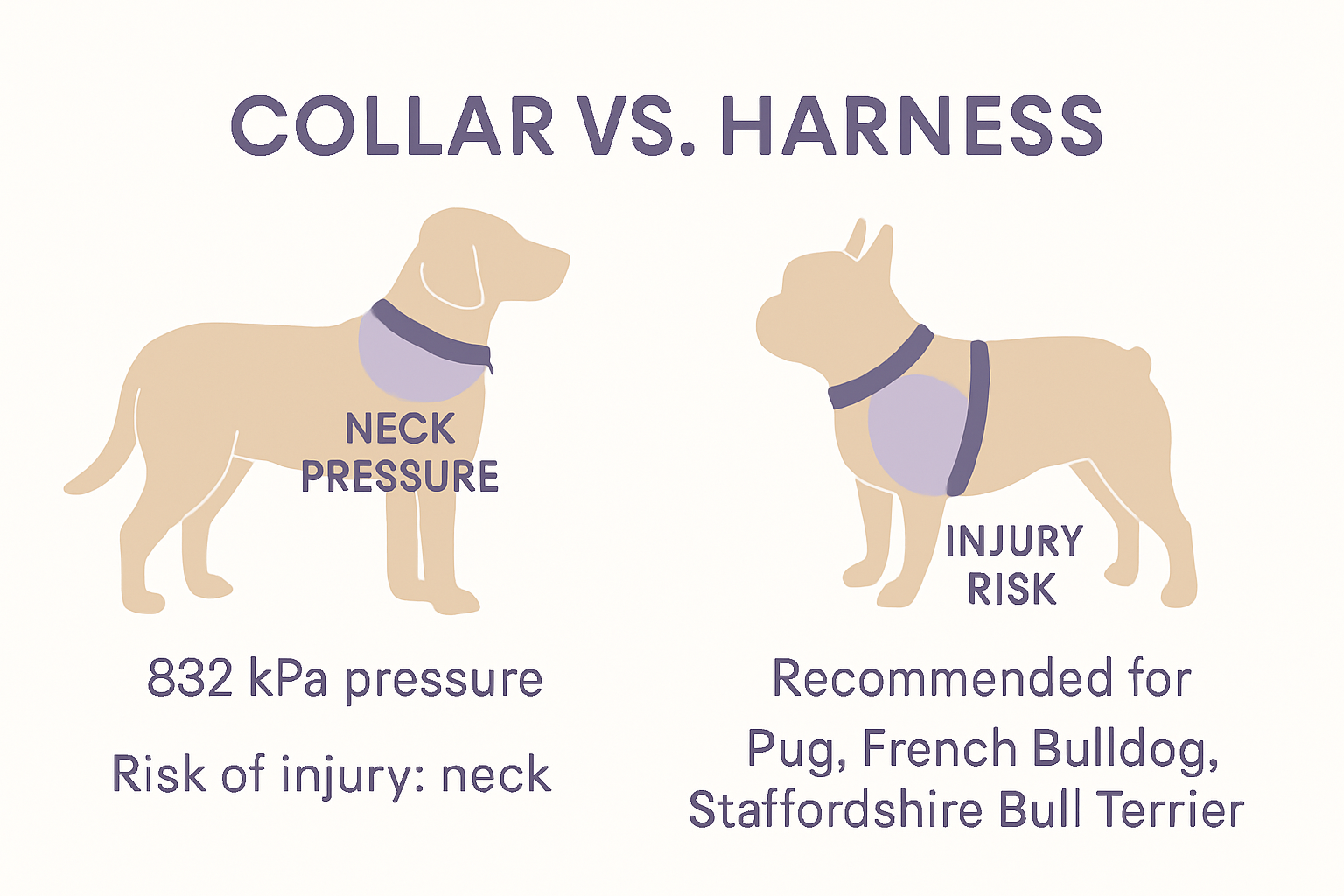
The implications extend beyond immediate discomfort. Repeated stress on a dog’s neck can lead to long-term health issues, including potential respiratory problems, neck strain, and even neurological complications. Brachycephalic breeds, with their already compromised respiratory systems, are particularly vulnerable to these risks.
Choosing Comfort and Protection
Selecting the right walking equipment is about understanding your individual dog’s needs. Factors such as breed, size, age, and walking behavior all play crucial roles in determining the most appropriate restraint. A well-fitted harness can distribute pressure more evenly across the body, reducing the risk of injury and providing better control during walks.
Veterinarians and animal welfare experts increasingly recommend harnesses as a safer alternative to traditional collars. The design of a harness allows for more natural movement, reduces potential neck strain, and provides owners with better control without compromising the dog’s comfort.
Ultimately, your dog’s safety and comfort should be the primary considerations when choosing walking equipment. Regular consultations with veterinary professionals, careful observation of your dog’s response to different restraints, and a willingness to adapt can help ensure enjoyable and safe walking experiences for both you and your furry companion.
Choosing the Right Option for UK Dogs
Selecting the ideal walking equipment for your dog involves careful consideration of multiple factors specific to your individual pet and lifestyle. In the UK, where dog walking is a cherished daily activity across diverse terrains and environments, making an informed choice becomes even more critical.
Breed and Size Considerations
Different dog breeds have unique physiological characteristics that significantly influence the most appropriate walking equipment. Research from the UK Kennel Club suggests that breed-specific anatomy plays a crucial role in determining the most suitable restraint.
Smaller breeds like Terriers and Chihuahuas might find traditional collars comfortable, while larger breeds such as Retrievers or Shepherds could benefit more from a supportive harness. Brachycephalic breeds common in the UK, including Pugs and French Bulldogs, are particularly sensitive to neck pressure and typically require harnesses to prevent respiratory complications.
Walking Environment and Behavior
The UK’s varied walking environments demand versatile walking equipment. Urban settings with crowded pavements require different control mechanisms compared to rural countryside walks. A study by the Royal Veterinary College highlights that dogs with high energy levels or strong pulling tendencies benefit significantly from no-pull harnesses that provide better owner control.
Consider your dog’s walking behavior carefully. Does your dog pull consistently? Are they easily distracted by urban wildlife or other dogs? These behavioral traits should guide your choice between a collar and a harness. No-pull harnesses with front attachment points offer superior control for dogs that tend to lunge or pull strongly during walks.
Practical UK-Specific Considerations
British weather and walking conditions present unique challenges. Waterproof and adjustable harnesses become particularly valuable in the UK’s often unpredictable climate. Look for equipment that can withstand frequent rain and muddy conditions while providing comfort and security.
Additionally, UK local regulations and park rules might influence your choice. Some public spaces have specific requirements for dog walking equipment, particularly in areas with wildlife conservation or urban park management guidelines. Always check local council regulations regarding dog walking restraints.
Training and gradual introduction are key to successfully transitioning between walking equipment. Whichever option you choose, ensure proper fitting and allow your dog time to adjust. Professional dog trainers recommend spending time helping your dog become comfortable with new walking gear through positive reinforcement and patience.
Ultimately, the perfect walking equipment is a personal choice that depends on your dog’s unique needs. Regular veterinary consultations, observing your dog’s comfort and behavior, and being willing to experiment will help you find the ideal solution. Your dog’s safety, comfort, and enjoyment should always be the primary considerations when selecting walking equipment.
Common Questions from New Puppy Owners
New puppy owners often find themselves navigating a maze of decisions about their furry companion’s care, with walking equipment being a particularly common source of confusion. Understanding the nuances of choosing between harnesses and collars can make a significant difference in your puppy’s early training and development.
Leash Training and Early Development
According to the American Kennel Club, puppies require special consideration when selecting walking equipment. While traditional collars have long been the default choice, modern veterinary advice suggests a more nuanced approach. VCA Animal Hospitals recommend that harnesses can be particularly beneficial during the critical early stages of leash training.
Puppies are still developing physically and psychologically, making them more susceptible to potential injuries from inappropriate walking equipment. A front-clip harness can provide better control and reduce the risk of neck strain during those crucial initial training sessions. This approach helps prevent negative associations with walking and supports positive learning experiences.
Safety and Comfort Considerations
Research published in the National Library of Medicine highlights a crucial difference in how collars and harnesses distribute force. When a puppy pulls or becomes excited, a collar concentrates pressure on the delicate neck area, potentially causing long-term damage. In contrast, a well-fitted harness distributes this force across the chest and back, significantly reducing the risk of injury.
New puppy owners should consider several key factors when selecting walking equipment. Breed size, temperament, and individual walking characteristics all play important roles. Smaller breeds and those with delicate neck structures benefit most from harnesses, while some larger, more controlled dogs might manage well with traditional collars.
Practical Tips for New Puppy Owners
Choosing the right walking equipment is more than just a functional decision. It’s about creating a positive walking experience that builds trust and communication between you and your puppy. Start by introducing the harness or collar gradually, using positive reinforcement techniques. Allow your puppy to become comfortable with the equipment through short, enjoyable sessions.
Consider investing in an adjustable harness that can grow with your puppy. Many modern harnesses offer multiple adjustment points, ensuring a comfortable fit during those rapid growth stages. Look for features like padded straps, breathable materials, and easy-to-use clasps that make walking a pleasure for both you and your furry friend.
Remember that every puppy is unique. What works perfectly for one might not suit another. Be patient, observant, and willing to experiment. Regular check-ins with your veterinarian can provide personalized advice tailored to your puppy’s specific needs. The goal is to create a safe, comfortable, and enjoyable walking experience that sets the foundation for a lifetime of happy adventures together.
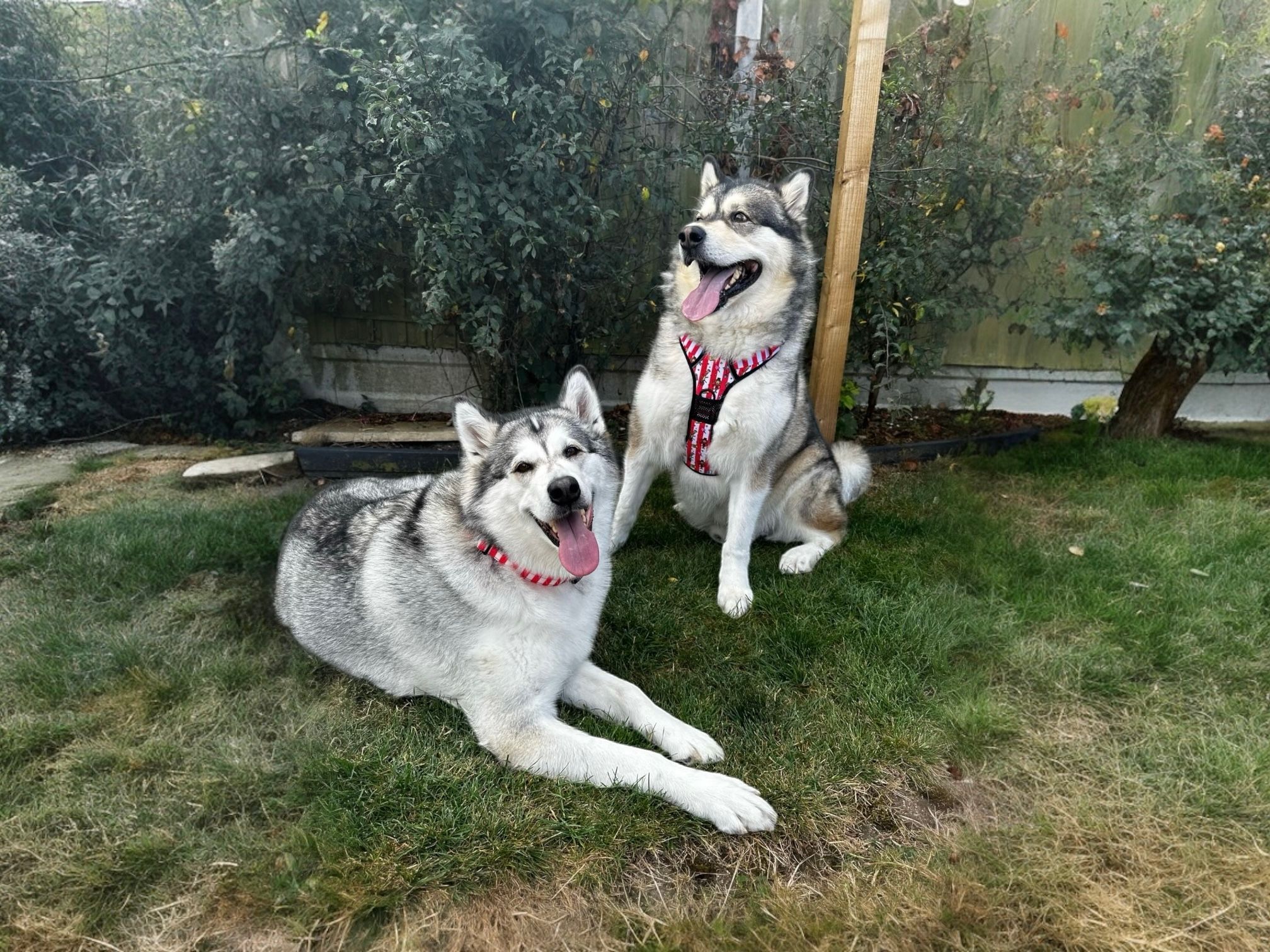
Frequently Asked Questions
What are the advantages of using a dog harness over a collar?
Using a dog harness can reduce neck strain, distribute pressure more evenly across the body, and provide better control, especially for energetic dogs or those that tend to pull during walks.
Are harnesses safer for brachycephalic breeds?
Yes, harnesses are safer for brachycephalic breeds, as they help prevent respiratory issues and avoid pressure on the delicate neck structures of these dogs.
How should I choose between a harness and a collar for my dog?
Consider your dog’s breed, size, and walking behaviour. Larger, energetic breeds generally benefit from a harness, while smaller, calmer breeds might manage well with a collar. Always consult a veterinarian for tailored advice.
What should I look for in a harness for my puppy?
When selecting a harness for a puppy, look for adjustable features for growth, padded straps for comfort, breathable materials, and ease of use with secure clasps to ensure a safe and enjoyable walking experience.
Find Your Dog’s Perfect Fit With Pup Chic Boutique
Still worried about the risks of collars causing neck strain or health problems for your dog? You have just learned how the right equipment can make all the difference for breeds that pull or have delicate necks. Every dog deserves to feel supported and secure on their walks, especially when choosing between a harness or a collar can genuinely protect their health and happiness. At Pup Chic Boutique, we design stylish no-pull harnesses, practical hands-free leads, and matching outfits that put your dog’s safety first. Everything we make is inspired by real UK dog mums who want their furry friends to feel as fabulous as they look.
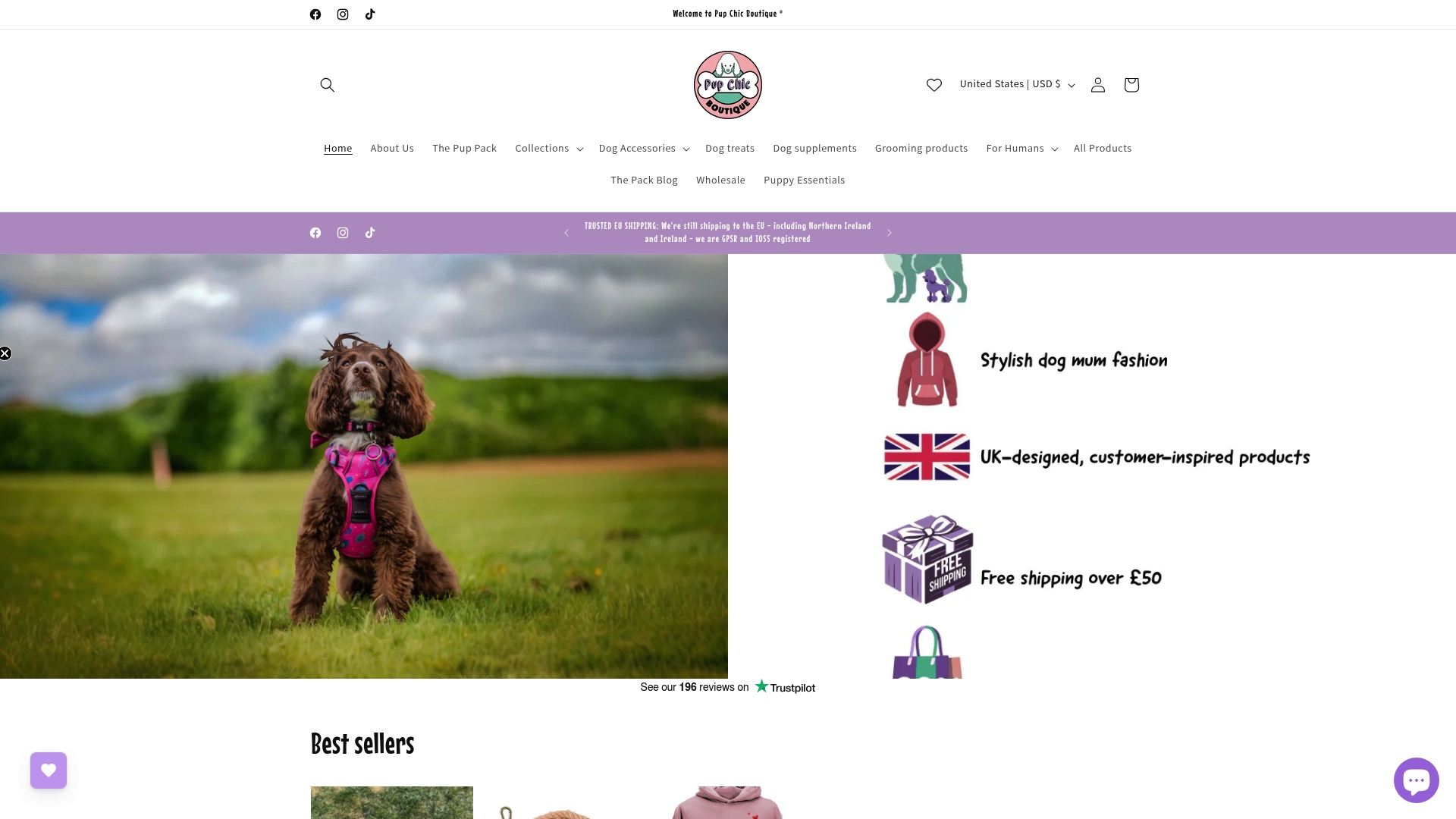
Select accessories that suit your dog’s needs for comfort and peace of mind. Discover our exclusive Pup Chic Boutique collection and see how our no-pull harnesses can help prevent the dangers discussed in this article. Shop now so you and your dog can enjoy safer, happier walks that cater to every breed and personality.
Recommended
Top Safety Tips for Dog Owners: Essential Guidance for 2025
– iPupPee